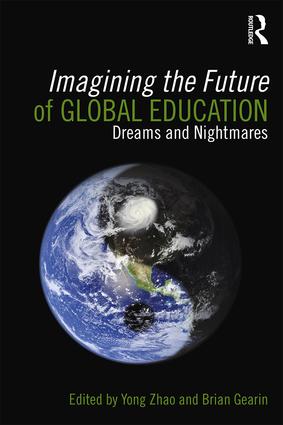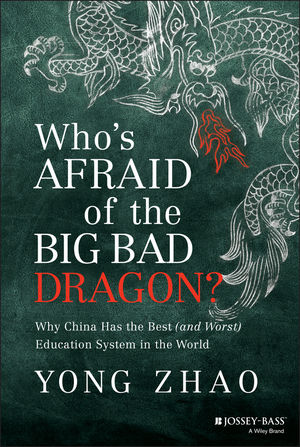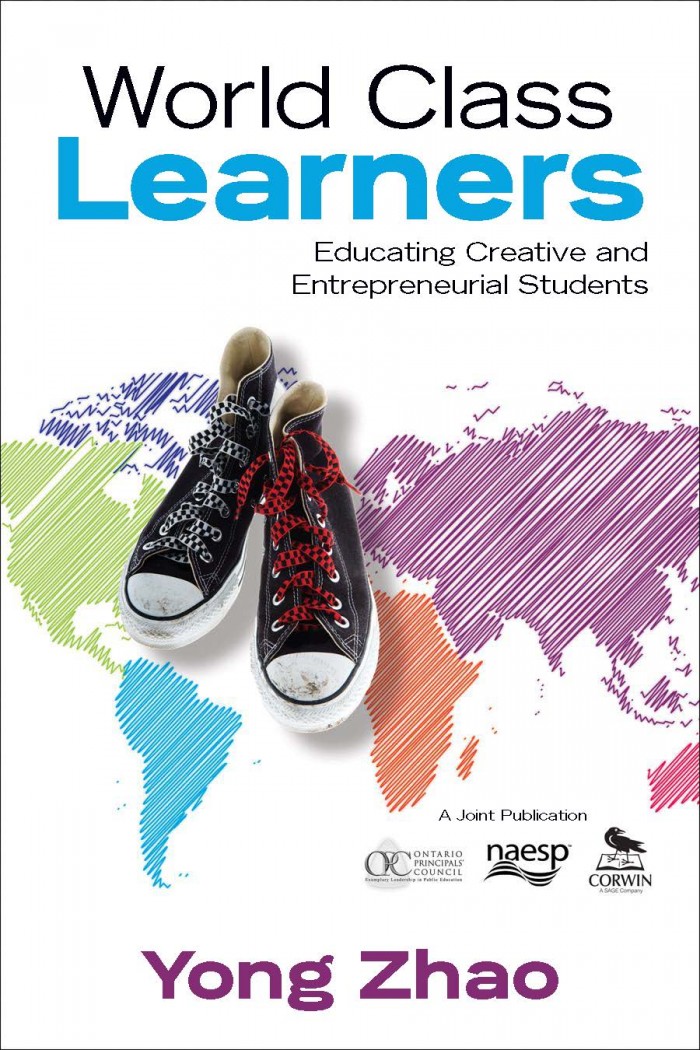The Dawn of a New Era: China’s College Entrance Exam Transformation
The year 2015 will be remembered as the beginning of a new era in Chinese education, according to some Chinese press[in Chinese]. It is the first year when a suite of policies aimed to transform the college entrance exam system or gaokao is to be implemented. The reforms are not a simple redesign of the exam, but rather a transformation of the entire college admission system. Because of the life-altering power of gaokao and the magnitude of the changes, this round of reform will likely bring transformative changes to education at all levels in China.
The Reform
“Very much applying for foreign universities,” a first year high school student said about college admissions outlined by the reform documents. He is right. In a nutshell, the reform aims to create an American style college admission system, but implemented in the Chinese way. The defining characteristics of the admission process used by most U.S. higher education institutions are multiple measures, multiple choices, and multiple opportunities, in contrast to the existing Chinese system characterized by limited measures, limited choices, and limited opportunities.
Multiple Measures
Typically the U.S. colleges rely on multiple measures to judge the qualification of applicants: standardized test scores (SAT and or ACT), academic performance in high school (GPA and curriculum), essays, letters of recommendation, and any additional evidence of special talents or experiences. The Chinese system has been by and large relying on only standardized test scores obtained in gaokao. The reformed system dramatically expands the number of measures of qualification to include:
- Standardized test scores in Math, Chinese, and English + 3 additional subjects of the student’s choice. The equivalent of the SAT or ACT.
- High school academic performance measured by standardized tests upon completion of each course. All courses included in the high school curriculum are included, while in the traditional system only a few subjects are included in the gaokao. This gives a more comprehensive picture of academic performance just like GPA in the U.S. system.
- In place of essays and letters of recommendation in the U.S., the reformed Chinese system includes “assessment of comprehensive qualities,” which is essential a portfolio of activities that demonstrate moral character (love for the Party, patriotism, ideological belief, honesty and trustworthy, kindness and friendliness, taking responsibility, and observing law and discipline), academics, mental and physical fitness, artistic abilities and talents, and societal and community engagement.
Multiple Choices
The reforms are intended to give more choices to students and colleges, in much the same way the U.S system allows.
- Choice in subjects: Much like applicants to American universities can choose to take SAT II subject tests or different AP courses, the reformed Chinese system will allow students to choose to take tests in 3 out of 6 or 7 subjects (depending on the province) in addition to three 3 required (math, English, and Chinese) to include in their total exam scores. The traditional Chinese system requires students to take the same tests in the same subjects decided at the provincial level.
- Choice in colleges: In the American system, applicants can apply to multiple universities across disciplines and tiers. The reformed Chinese system will enable similar choices; while in the traditional system Chinese students submit a list of ranking-ordered universities for each tier (a total 3 tiers exist). Their first university in the tier their scores qualify has the exclusive right to review the applications. If rejected, the file goes to the second choice, but by then their second choice university may have fulfilled their admission quota. Under the new system, Chinese students can apply to multiple universities and can be admitted by multiple ones.
- Choice in admission processes: Colleges and universities in the U.S. have different admissions practices, for example, early admissions, rolling admissions, and regular admissions. The reformed system in China will expand different admissions practices designed by universities to give students more choices.
Multiple Opportunities
Unlike the U.S. system that allows students to take the SAT and ACT as many times as they wish and whenever they want, the traditional Chinese system offers the entrance exam only once a year and the scores are valid only for that year’s admissions. The reformed system aims increase the number of times a student can take a given test to twice (except for math and Chinese, which will continue to be offered only once a year). The scores will also be valid for two years in some provinces.
Americanization with Chinese Characteristics
While the spirit of the Chinese gaokao reform seems to follow the U.S. model, it is clear that the actual implementations reflect the Chinese reality. For example, corruption is of paramount concern. To guard against possible corruption, China must have a system that minimizes the possibility of tampering and subjective judgment. As a result, the reformed system does not consider high school grades, which can be artificially inflated, letters of recommendation, which are purely subjective judgment and can be easily manipulated, or personal essays and statements, which are subjective and can be fabricated easily. So testing remains the primary form of judging students abilities.
Even the seemingly subjective “assessment of comprehensive qualities” has an elaborate process to ensure objectivity and verifiability. The Ministry of Education’s guidelines requires the following steps:
- Truthful documentation: Teachers direct students to truthfully record the activities they participated and collect supporting evidence.
- Reviewing and section: At the end of each term, with the help of teachers, students select important and representative activities for assessment. Students must sign on the materials if they are to be used for college admissions.
- Public display and verification: Selected records must be displayed in public spaces such as the classroom and school website for verifications. Teachers must further review and verify the materials and place their signatures on them.
- Develop the portfolio: The MOE asks that each province develop a standard format for the portfolio and requires that teachers provide “objective and accurate comments on each student’s characteristics.” Additionally, schools must review each student’s portfolio.
Reasons for Reform
This round of gaokao reform is part of China’s comprehensive education reforms aimed to cultivate an innovative workforce needed for the nation’s future economic development and address a number of well-recognized concerns. The State Council’s announcement summarizes the primary problems with the traditional gaokao system:
- Negative impact on the development of the whole child
- Excessive academic burden
- Unequal opportunities for higher education
- Widespread school selection at the secondary and primary levels
- Cheating in awarding bonus points and violations of admission policies and regulations
To address the last problem, the new Gaokao has drastically redesigned the bonus-points program, which was originally designed to identify special talents, encourage certain pro-social behaviors, and compensate for social inequalities. For example, the reformed system no longer awards bonus points to students who have received external awards in sports and arts.
Timeline
In 2014, Shanghai and Zhejiang Province began piloting the parts of new system. Students beginning their high school in these two places in 2014 will be the first group to experience the new system.
In 2017, the new system will begin implemented across the nation.
In 2020, all proposed changes implemented and the new system established
Reactions
The reactions to the new system have been generally positive in China. Many hope this will truly change China’s education for the better. But there is much anxiety, confusion, and doubts among school leaders, teachers, parents, and students because of the immenseness of the changes. Some of the immediate reactions captured by the media include:
The Burden of Choice
The new system affords a lot more opportunities for students and parents to make choices. For people used to no or limited choices, making choice can be a frightening experience. Instead of making choices, some parents in Shanghai are making their children take extra tutoring in every subject, adding even more academic burden, according to a report in China Youth.
The Concern of No Differentiation
In the new system, tests of the 3 additional subjects (out of physics, chemistry, biology, history, geography, and politics) will not report results in points but in grades. A total of 11 grades will be assigned to students based on their scores. The difference between each grade is 3 points. Some parents are concerned that 11 grades are not as good as the old point system to separate the top students from the bottom ones. It is thus unfair to the top students in the 3 graded subjects, who may be poor in the 3 subjects using the point system (math, Chinese, and English), each worth 150 points. A Shanghai mother whose son is excellent in physics and chemistry is deeply concerned. She told China Youth that even if her son earns A+ in all three subjects, which totals 9 points higher than the next grade A, he is going to lose to those who excel in math, Chinese, or English, because they have a total of 450 possible points. The mother thus is considering send her son to study overseas.
Chaos and Turmoil in Schools
A big concern for school leaders and teachers is how to organize classes and teaching under the new system. Most Chinese schools do not have the tradition of offering electives and allow students to choose classes. It is thus a tremendous change to put into place a system to support and manage student choices of different courses.
Doubts about the Assessment of Comprehensive Qualities
Not surprisingly, one of the major concerns has to do with the objectivity, transparency, and feasibility of the newly added element. While over the past years, China had promoted such initiatives and many schools have adopted such practices, the results have not been ideal. But they were not used for making decisions as high stakes as college entrance. Under the new system, the stakes become higher and hence many questions if Chinese schools can manage a reliable and valid system for such high-stake decisions.
New Opportunities for Tutoring Businesses
The new gaokao is likely to open a new market for education businesses. Already many tutoring companies have begun to create and offer training programs for the new gaokao. Parents will be looking for new programs aimed at preparing their children for the new exam and also look for English training programs if they decide their children had better leave the system to study abroad.




























Feel free to comment:
The views expressed on this site are entirely my own. They do not represent my employer or any other organization/institution. All comments are subject to approval.